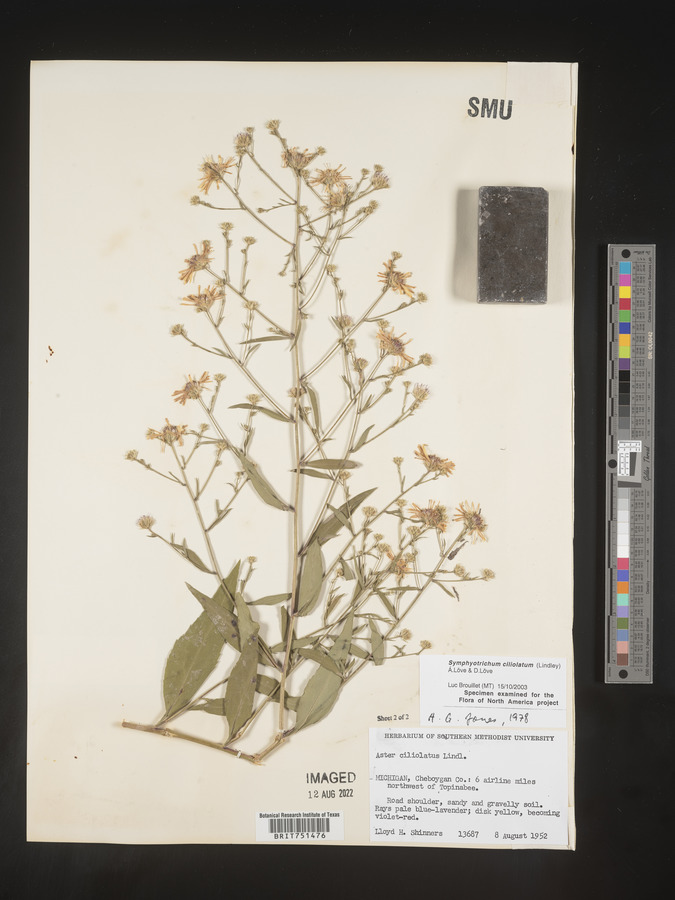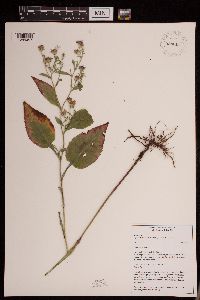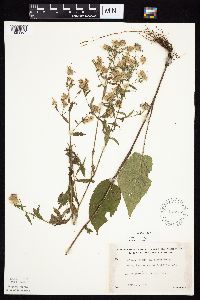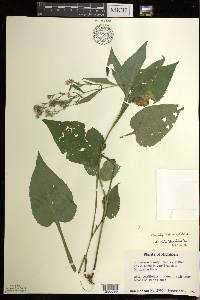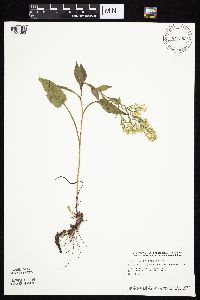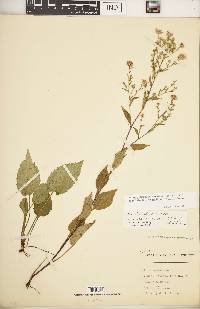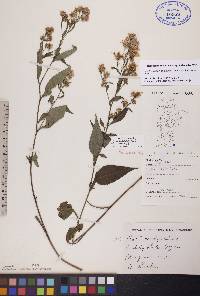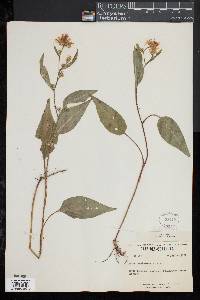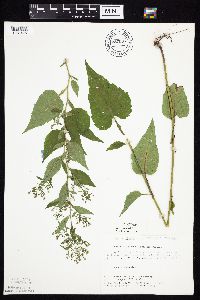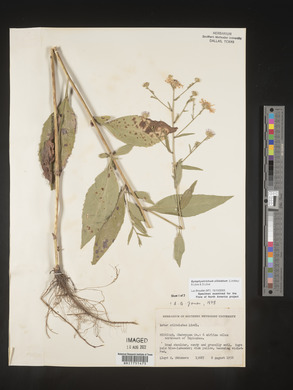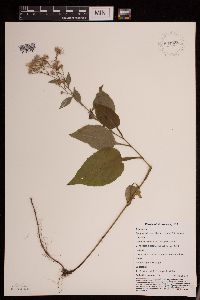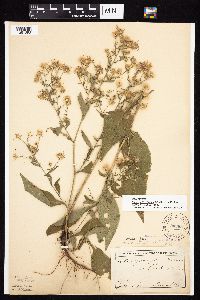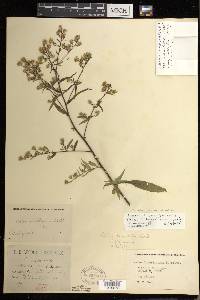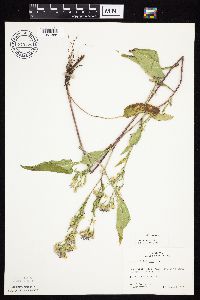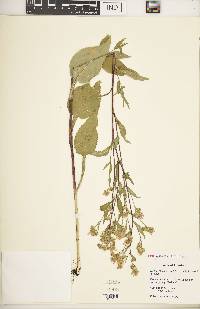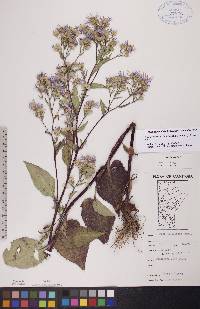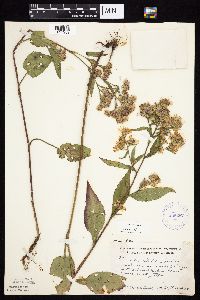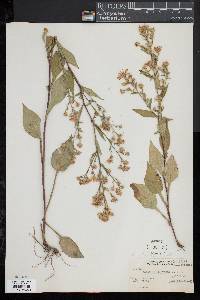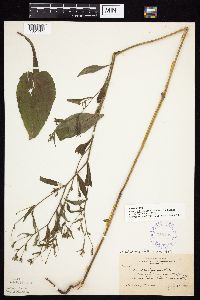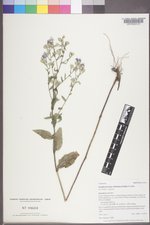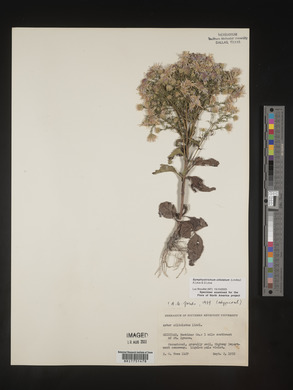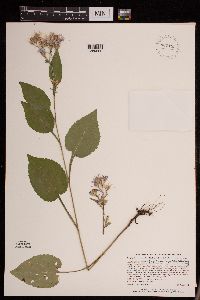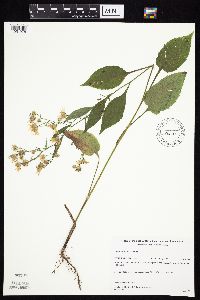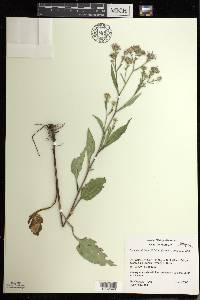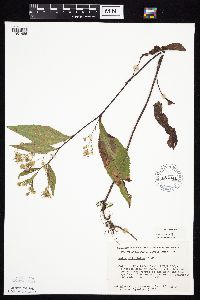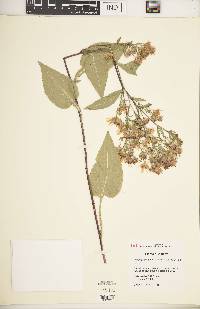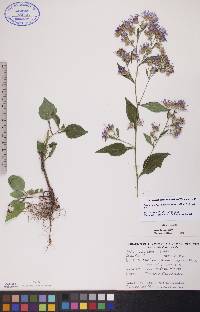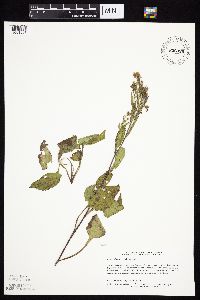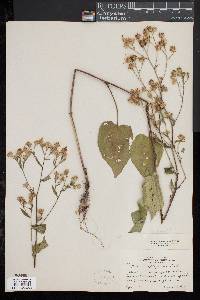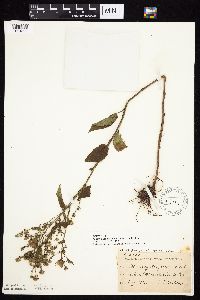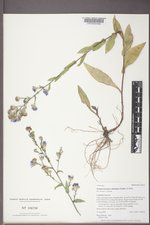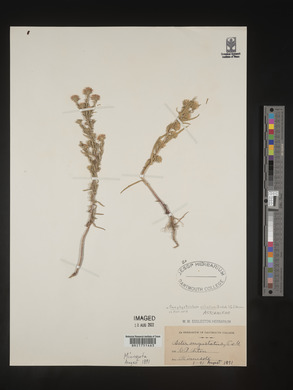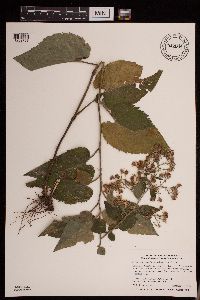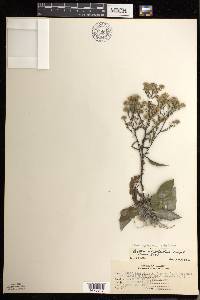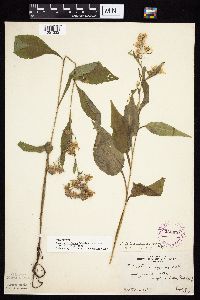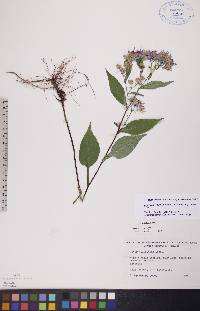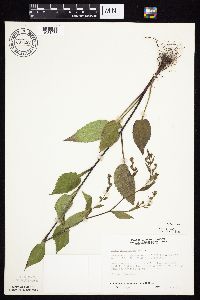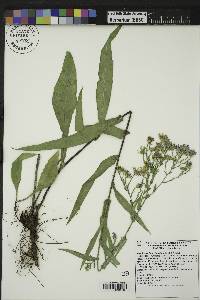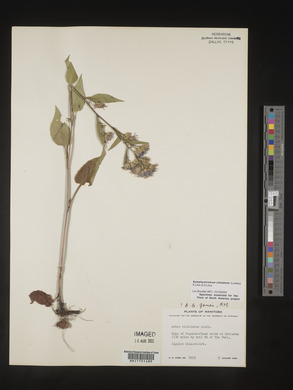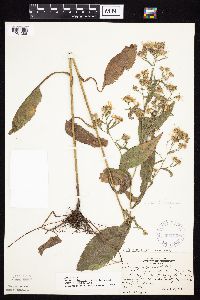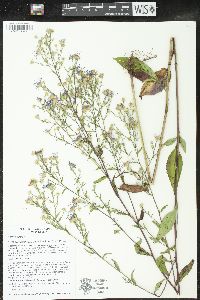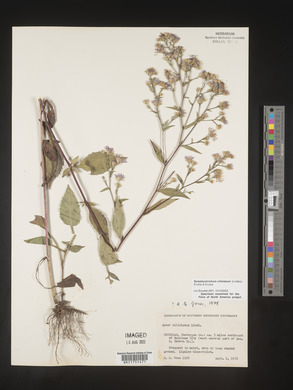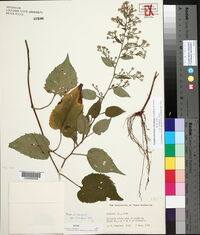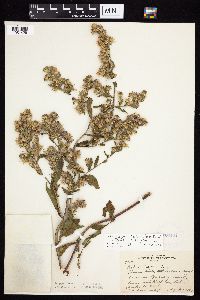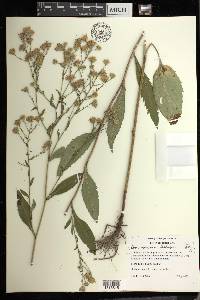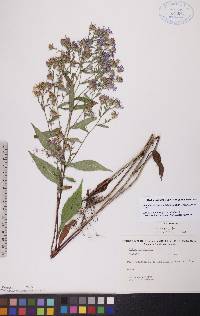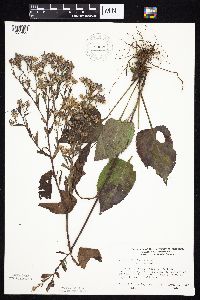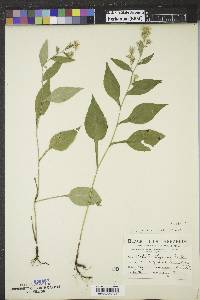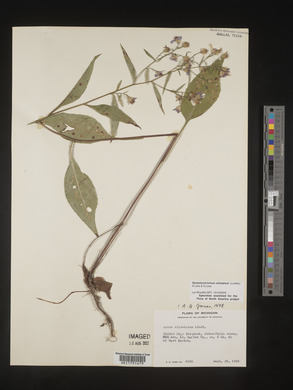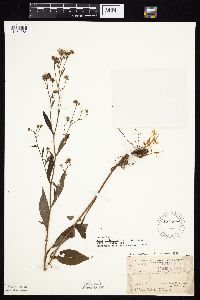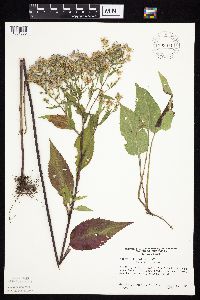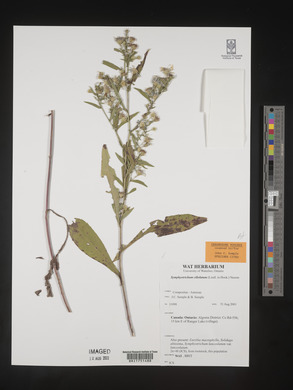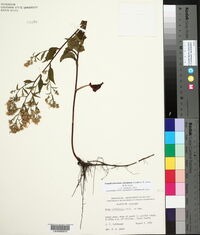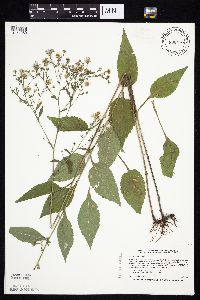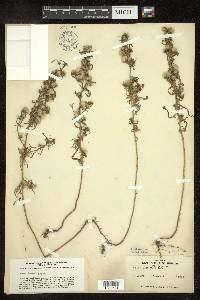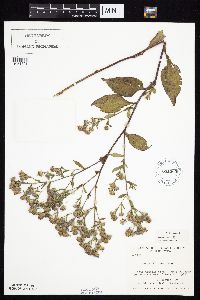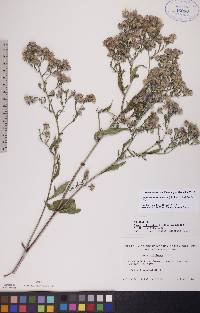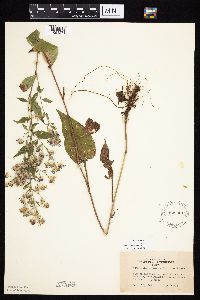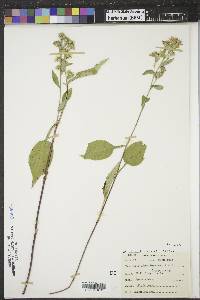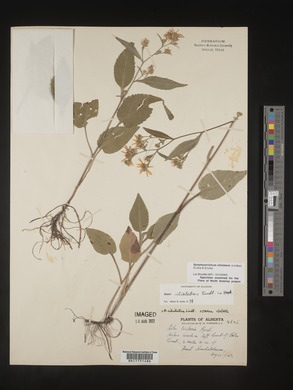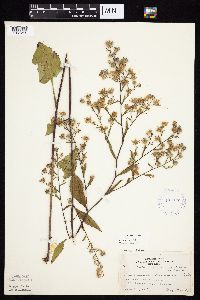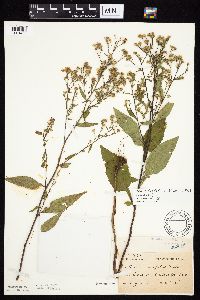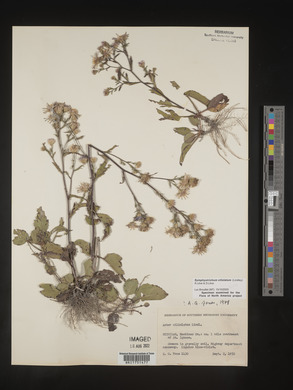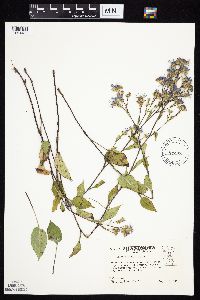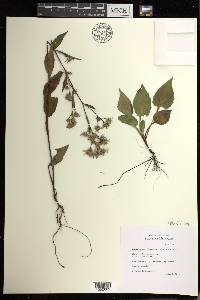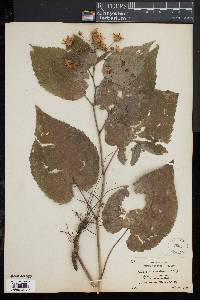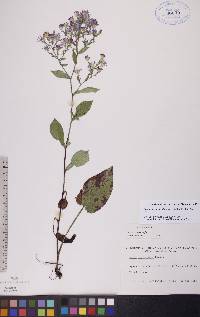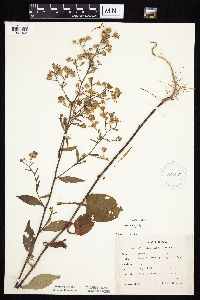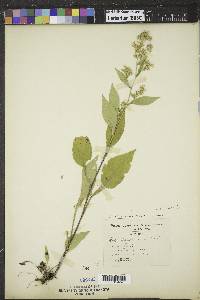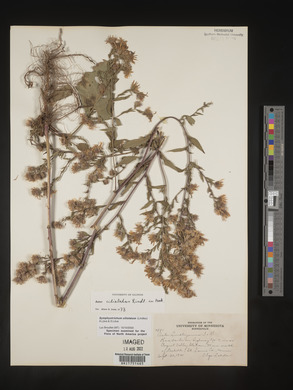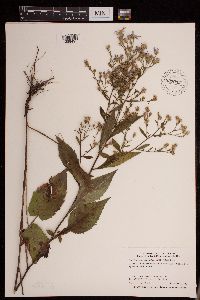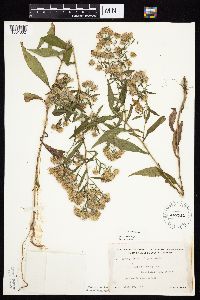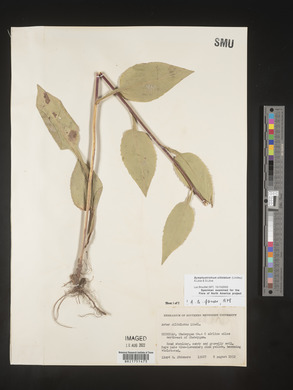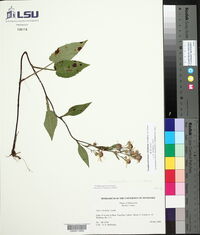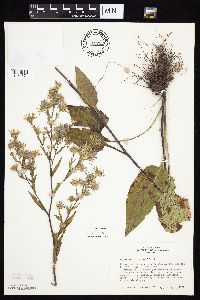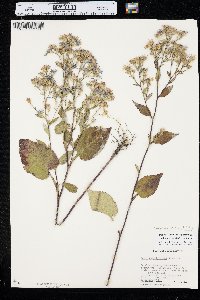Symphyotrichum ciliolatum
|
|
|
|
Family: Asteraceae
Lindley's American-Aster
[Aster lindleyanus var. comatus Fern.] |
Perennials, (10-)20-120 cm, colonial or cespitose; usually long-rhizomatous, sometimes with branched caudices. Stems 1-3+, erect (straight to ± flexuous), glabrate to sparsely hirsute or strigillose, especially distally. Leaves thin, margins coarsely, sharply serrate to crenate-serrate or serrulate, ciliate to scabrous, apices acute or acuminate, mucronulate, abaxial faces glabrate to sparsely hirsute, midveins usually densely hirsute, sometimes glabrous, adaxial glabrous or glabrate to scabrellous; basal usually withering by flowering (sometimes persistent on small plants), long-petiolate (petioles slightly winged, sheathing, ciliate), blades ovate, (24-)40-120(-270) × 15-70 mm, bases usually shallowly cordate, sometimes rounded; proximal cauline often withering by flowering, winged-petiolate, blades ovate to oblanceolate or lanceolate, (24-)60-150 × (10-)20-60 mm, reduced distally, bases subcordate to cuneate; distal sessile or sometimes subsessile (petioles widely-winged), blades lance-ovate to linear-lanceolate or linear, 18-75 × (2-)5-25 mm, bases cuneate, sometimes ± clasping, margins serrulate or entire. Heads [(6-)13-50(-100+)] in open, paniculiform arrays, branches ascending. Peduncles 0.2-1.5+ cm, unequal, reduced distally, ± hirsutulous, bracts 0-4, subulate or linear. Involucres campanulate, (4-)5-6.5 mm. Phyllaries in 4-5 series, narrowly oblong-lanceolate to oblong-oblanceolate or linear-oblanceolate (innermost), ± unequal, bases indurate 1 / 3 - 2 / 3 , margins narrowly scarious, erose, hyaline or infrequently purplish, sparsely ciliolate, green zones lanceolate to linear-lanceolate or linear, apices acuminate to long-acuminate, faces glabrous. Ray florets (12-)14-20; corollas pale to deep blue or bluish purple, laminae (8.3-)10-15 × 1-2.3 mm. Disc florets 14-25(-29); corollas yellow becoming reddish purple, 4.3-6.4 mm, tubes shorter than funnelform throats, lobes narrowly triangular, 0.5-1.1 mm. Cypselae yellowish white, obovoid, compressed, 1-2 mm, 5-6-nerved, faces glabrate to sparsely strigillose; pappi white to pinkish, 3-6 mm. 2n = 48. Flowering late Jul-Oct. Rich, open, often ± calcareous, boreal deciduous forests (aspen or aspen-birch-fir-spruce), edges of woods, clearings, aspen or bur oak thickets, sometimes open pine forests, streambanks, trails, roadsides; 0-2000+ m; Alta., B.C., Man., N.B., Nfld. and Labr. (Nfld.), N.W.T., N.S., Ont., Que., Sask., Yukon; Ill., Maine, Mass., Mich., Minn., Mont., N.H., N.Y., N.Dak., S.Dak., Vt., Wis., Wyo. Symphyotrichum ciliolatum sporadically hybridizes with S. laeve var. laeve or var. geyeri in their areas of overlap, notably across the Canadian prairies and in south-central Ontario (Manitoulin Island, Bruce Peninsula). It also hybridizes with S. novibelgii var. novibelgii in the Gulf of St. Lawrence area [Symphyotrichum ×subgeminatum (Fernald) G. L. Nesom; syn. Aster subgeminatus (Fernald) B. Boivin]. Aster ciliolatus forma comatus Fernald is densely ciliolate along the midnerves and represents an extreme of the variation found in the species.
|

